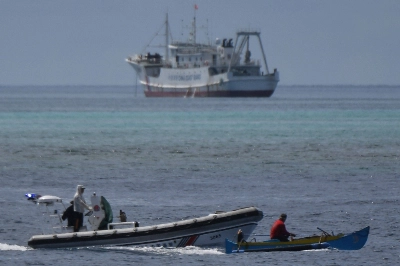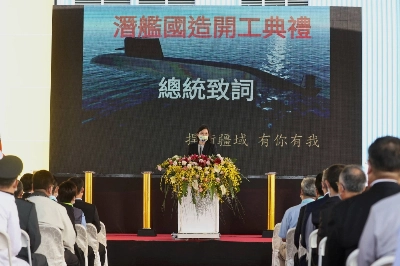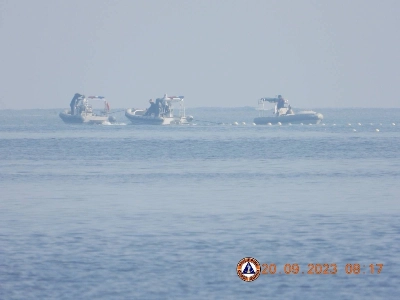The Philippines on Tuesday said it had conducted “a special operation” to remove a 300-meter floating barrier installed by China in a flash point area of the contested South China Sea, just 230 kilometers (140 miles) from the Philippine coast.
The incident — which prevented Filipino fishers from entering the shoal, where the catch can be more abundant — was the latest in a series of rows over the strategic waterway that have seen bilateral ties between the two Asian nations plummet.
Video posted to social media by a Philippine Coast Guard spokesman showed divers cutting the rope-and-buoy barrier and hauling away its anchor outside the entrance to Scarborough Shoal on Monday, after their Chinese counterparts installed the barrier over the weekend.



















With your current subscription plan you can comment on stories. However, before writing your first comment, please create a display name in the Profile section of your subscriber account page.